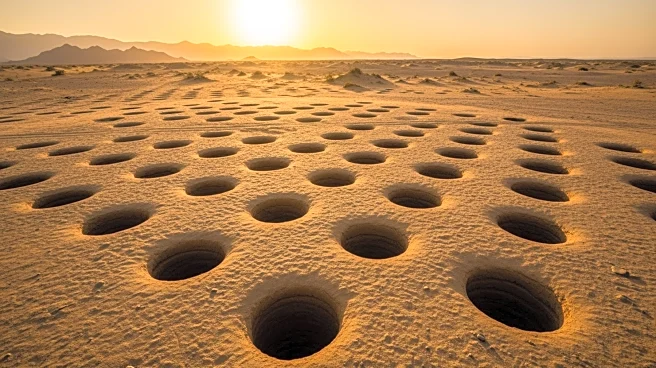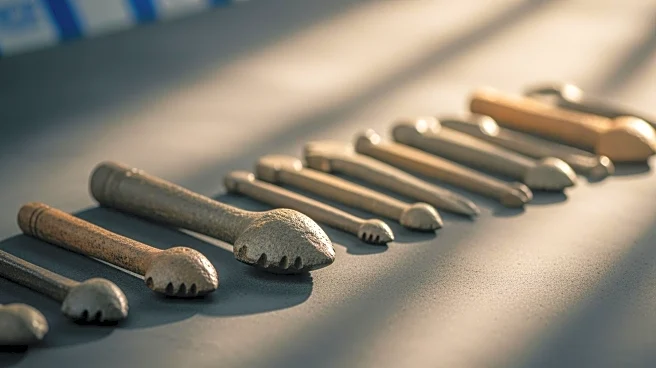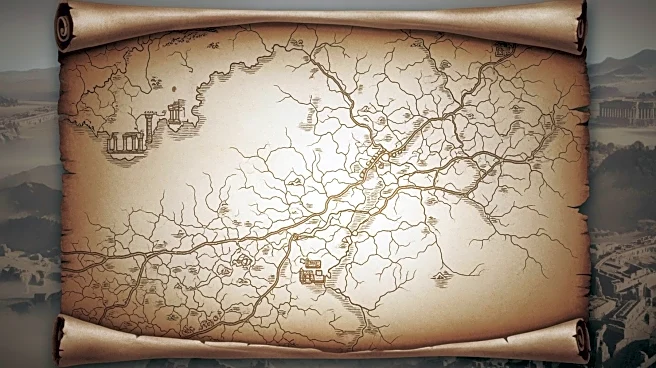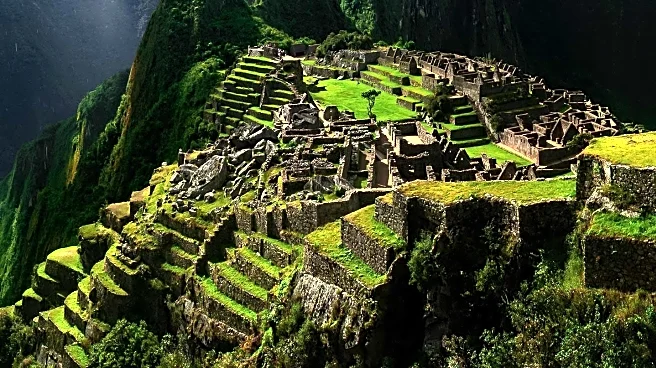What's Happening?
A hillside in Peru, known as Monte Sierpe, is covered by over 5,000 aligned holes, which may have served as a giant Inca accounting device. The 'Band of Holes' stretches across the slopes in a snake-like
pattern and has puzzled archaeologists since its discovery in 1933. Recent analysis by Jacob Bongers and his team from the University of Sydney involved sediment samples from 19 holes and drone imagery, revealing pollen from food crops and wild plants traditionally used for baskets and rafts. This suggests that local groups from the Chincha culture, which existed from AD 900 to 1450, used the holes to deposit goods brought in woven baskets loaded onto llamas. The site may have initially functioned as a barter marketplace, later evolving into a large-scale accounting device under the Inca Empire.
Why It's Important?
The discovery of the 'Band of Holes' as a potential accounting device offers insights into the economic and social practices of the Inca Empire and the preceding Chincha culture. This monumental structure could have facilitated trade and tax collection, reflecting the sophisticated organizational capabilities of these ancient civilizations. Understanding the purpose of these holes helps archaeologists piece together the economic history of the region, highlighting the importance of trade routes and marketplaces in pre-Hispanic societies. The findings also underscore the role of social technology in coordinating large-scale economic activities without modern communication tools.
What's Next?
Further research may focus on the chronological development of the site and its potential evolution over time. Archaeologists might explore the relationship between the holes and other Inca counting devices, such as khipus, to better understand their function. Additionally, investigations into the surrounding pre-Hispanic road networks and administrative sites could provide more context on how goods were transported and managed. The study may also prompt a reevaluation of other similar sites in the region, potentially uncovering new aspects of Inca and Chincha economic systems.
Beyond the Headlines
The 'Band of Holes' not only serves as a testament to ancient economic practices but also raises questions about the cultural significance of monumental structures. The snake-like pattern could have held symbolic meaning, serving both functional and ceremonial purposes. This duality reflects the complex interplay between practical needs and cultural expressions in ancient societies. The site’s visibility from afar suggests it may have been a landmark for gatherings, emphasizing the role of physical structures in social organization.











